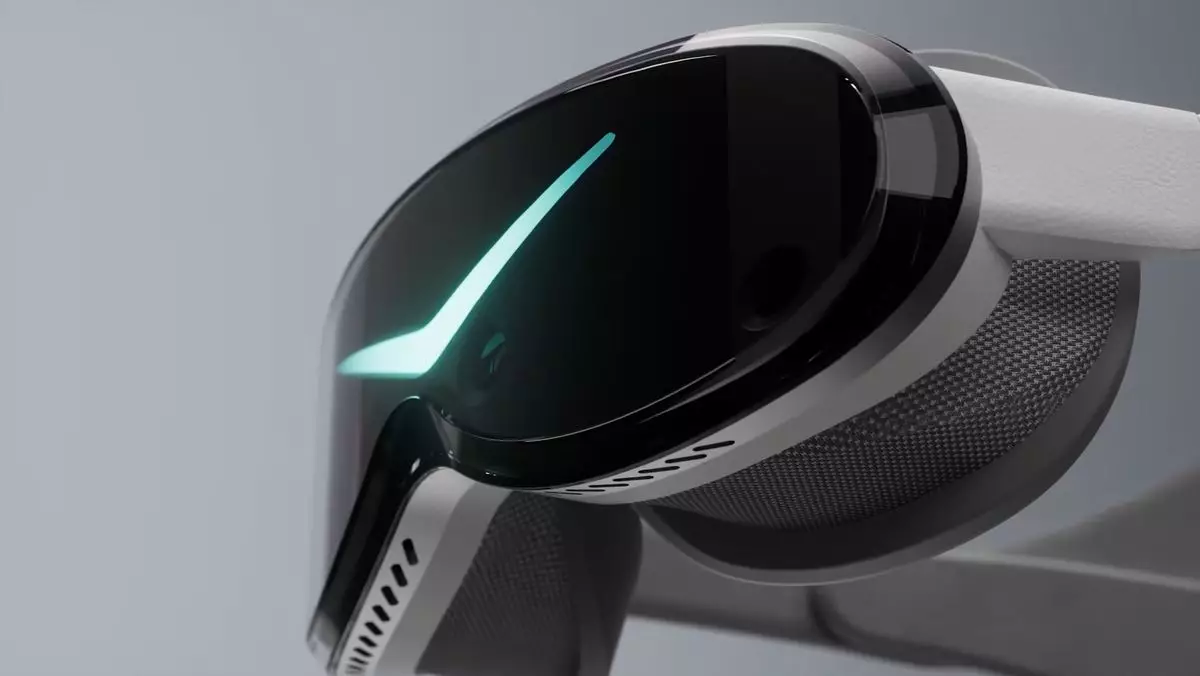The ever-evolving landscape of virtual reality (VR) technology has taken yet another exciting turn with the introduction of the Pimax Dream Air headset. As the VR market continues to expand, this new offering from Pimax has sparked conversations not only for its impressive specifications but also for its remarkably lightweight design that is poised to redefine user experiences in immersive environments.
Pimax has long positioned itself as a frontrunner in the VR arena, and their latest innovation, the Dream Air, is an intriguing addition to their lineup. At under 200 grams, the Dream Air boasts a design that’s more than just lightweight; it emphasizes performance without compromising on features. This is a notable advancement compared to prevalent headsets like the Valve Index, which weighs over 800 grams. Such a disparity in weight paves the way for enhanced comfort and prolonged usage, crucial factors for avid gamers and VR enthusiasts alike.
What sets the Dream Air apart is the incorporation of Micro-OLED technology. By employing this cutting-edge panel tech, Pimax ensures a compact size while maintaining high visual fidelity. With the same technology being utilized in Apple’s Vision Pro and Pimax’s upcoming Crystal Super, it is evident that Micro-OLED could become a standard in advanced VR systems. The Dream Air promises an 8K resolution experience, which yields breathtaking graphics and immersive environments that captivate users’ attention. To enhance this experience, features like pancake optics are also included, contributing to the headset’s lightweight nature without sacrificing quality.
In addition to its impressive specifications, the Dream Air is furnished with an array of features that enhance user interaction and immersion. Integrated spatial audio and eye tracking are significant elements that set it apart from its competitors. These features not only enrich the virtual experience but also introduce a new level of interaction by responding to users’ gaze, potentially transforming gameplay dynamics. Furthermore, the inclusion of advanced tracking cameras, hand tracking, and auto-IPD adjustments exemplifies Pimax’s commitment to cutting-edge technology and user-centric design.
However, with innovation often comes a hefty price tag. The Dream Air is positioned at a premium price point of $1,199 for a reservation, climbing potentially beyond $1,991 upon completion of the purchase. This price, when juxtaposed with the $699 for the Pimax Crystal Super, raises questions about market acceptance and consumer value perceptions. While the Dream Air offers advanced features, the significant increase in cost compared to other high-end devices merits scrutiny. It would require prospective buyers to weigh the advantages of its lightweight design and additional features against its substantial price.
The competitive landscape in VR headset manufacturing is constantly evolving, with products like the Bigscreen Beyond, which weighs only 127 grams, presenting formidable competition. However, the Pimax Dream Air’s eye tracking feature might provide a unique edge that could entice potential buyers who value this functionality. It is essential to consider how the Dream Air’s features will resonate with the audience amid a landscape where price, performance, and comfort often drive consumer choices.
As Pimax gears up for a shipping date set in May 2025, the anticipation surrounding the Dream Air is palpable. Given the mixed reception of Pimax’s previous offerings, particularly the original Crystal, the company must deliver a product that not only meets but exceeds user expectations. With VR technology advancing at an unprecedented rate, maintaining relevance in this competitive market will require constant innovation and consumer engagement.
The Pimax Dream Air represents a promising leap in the world of virtual reality, merging lightweight design with high performance and advanced features. As we look forward to its release, the question remains: will it live up to its ambitious promises? Only time will tell, but for now, the Dream Air solidifies Pimax’s position as a key player in the next generation of VR technology. As the industry evolves, so too must the expectations of what a VR headset can offer, and the Dream Air seems to be poised to meet that challenge head-on.

